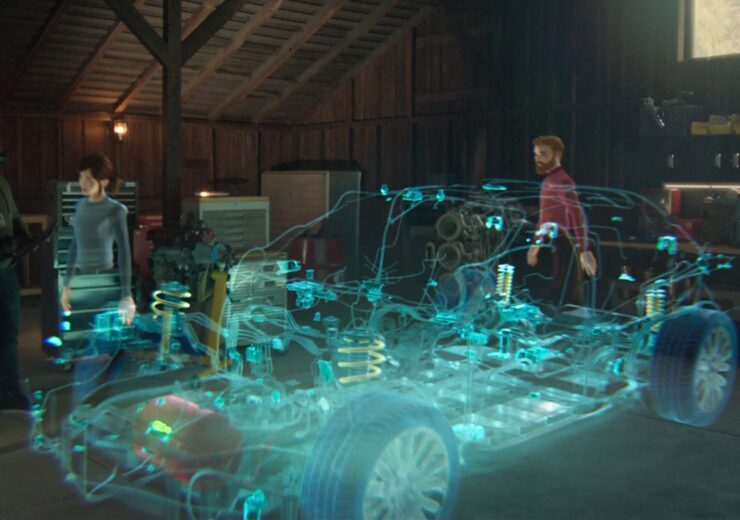By using 3D capture technology, the platform beams lifelike images of individuals into a virtual scene

An example of how the Microsoft Mesh platform can be used. (Credit: Microsoft)
Microsoft has unveiled Microsoft Mesh, a new mixed-reality platform for enabling people in different physical locations to attend virtual meetings as holograms.
The new technology was showcased during the company’s Ignite digital conference.
Powered by the Microsoft Azure cloud computing solution, the new platform utilises 3D capture technology for beaming lifelike images of individuals into a virtual scene.
Irrespective of their locations, people can attend virtual events in the form of avatars in what is a shared holographic world.
The platform can be accessed using HoloLens 2, virtual reality (VR) headsets, mobile phones, tablets, or PCs by using any Mesh-enabled app.
Microsoft technical fellow Alex Kipman said: “This has been the dream for mixed reality, the idea from the very beginning.
“You can actually feel like you’re in the same place with someone sharing content or you can teleport from different mixed reality devices and be present with people even when you’re not physically together.”
Using Microsoft Mesh, teams that are distributed geographically can have collaborative meetings, undertake virtual design sessions, help each other, learn together, and also host social meetups virtually.
According to Microsoft, initially, users will get to express themselves as avatars in the shared virtual experiences. In the course of time, they will be enabled to use holoportation to project themselves as their desired lifelike, photorealistic selves.
The company said that the new platform has been created following years of its research and development in hand and eye-tracking, HoloLens, and in creating persistent holograms and artificial intelligence (AI) models for producing expressive avatars.
Microsoft Mesh is backed by Azure’s enterprise-grade security and privacy features along with its other computational resources, AI, data, and mixed reality services.
During the Ignite digital conference, Kipman said: “In these collaborative experiences, the content is not inside my device or inside my application. The holographic content is in the cloud, and I just need the special lenses that allow me to see it.”
As an example, Microsoft said that by using the new platform, engineering students learning about electric cars could come together around a holographic model as avatars. They can then remove parts of the engine and see what’s underneath.
In the coming months, the Microsoft Mesh platform will provide a full suite of AI-powered tools to developers. These include tools for avatars, spatial rendering, management of sessions, synchronisation across various users, and holoportation to develop collaborative solutions in mixed reality.


